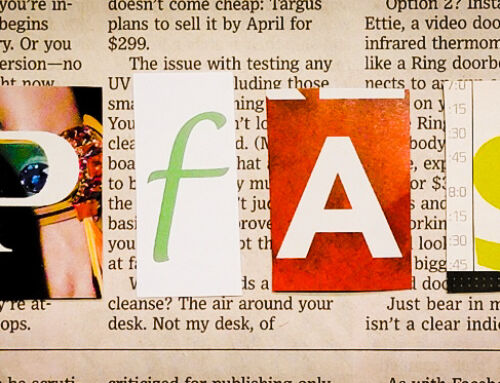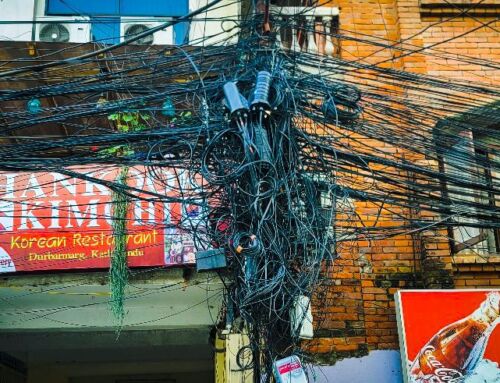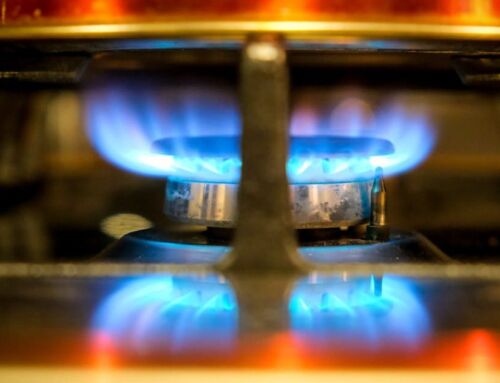View by Topic
Recent Articles
-
EPA Designates PFOA and PFOS as Hazardous Substances under Superfund LawSaturday, April 20th, 2024
-
Federal Government Finalizes New Efficiency Standards for LightbulbsSaturday, April 13th, 2024
-
2024 IECC is Final After Addressing Preemption IssuesSaturday, April 6th, 2024
-
Settlement Portends Broad Failure in Attempts to Ban Natural GasSaturday, March 30th, 2024
-
SEC Climate Disclosure Rule Stay and Venue Now in the 8th CircuitSaturday, March 23rd, 2024
View by Month/Year
“Green Building Law Update” Headlines
Recent Articles & News from
Stuart Kaplow’s blog
at GreenBuildingLawUpdate.com
- EPA Takes Action: PFOA and PFOS Now Hazardous Substances Under Superfund Law April 21, 2024
- Shedding Light on the Future: The Evolution of Lightbulbs in the Wake of New Energy Efficiency Standards April 14, 2024
- 2024 International Energy Conservation Code is Final After Addressing Preemption April 7, 2024
- Settlement Portends Broad Failure in Attempts to Ban Natural Gas March 31, 2024
Subscribe to the Green Building Law Update!
Stuart Kaplow brings his expertise and extensive experience to the table with his unique digital publication, "Green Building Law Update". Subscribers receive regular updates to keep them informed about important issues surrounding Environmental Law, Green Building & Real Estate Law, as well as the emerging demand for Environmental Social Governance (ESG).
Get fresh content through the lense of Stuart Kaplow's cutting-edge expertise, innovative commentary and insider perspective. Don't miss another issue! Subscribe below.

Passive House is “In” in 2017
As you consider what’s “in” and what’s “out” in 2017, within the realm of green building, Passive House is in.
It is not controversial to accept that a strategy to reduce greenhouse gas emissions from buildings at low cost, while also improving occupant comfort, is to improve the thermal performance of the building envelope. By increasing the insulation and airtightness of walls, roof, and windows, it is possible to reduce the energy used for heating buildings by up to 90% compared to common practice. This “passive” approach, in contrast with active systems based on a constant supply of conditioned air by HVAC systems is the basis of Passive House.
The origins of Passive House date back 40 years to the Saskatchewan Conservation House built in 1977 in Regina, Canada with an airtight building enclosure and one of the first modern heat recovery ventilation systems in the world. Those design principles were systematized by Bo Adamson and Wolfgang Feist, who founded the Passive House Institute (Passivhaus Institut) in 1996 in Darmstadt, Germany.
Buildings utilizing the Passive House standard use dramatically less energy than typical buildings due to a high level of insulation, high-performance windows, an airtight building enclosure, minimized thermal bridges, and continuous ventilation with energy recovery.
The number and size of Passive House projects in North America has rapidly grown in the last year. Several mid-rise residential projects currently under construction will more than quadruple the number of available units and triple the square footage of Passive buildings. And there is Cornell University’s 250 foot tall 26 story high rise under construction on Roosevelt Island that may be the tallest and biggest Passive building.
While most Passive buildings are residential (well over 3500 buildings worldwide and 300 in North America), there are a growing number of commercial and institutional projects (over 500) including office buildings, hotels, schools, and even a prison.
There are currently over 1600 professionals and trades trained in Passive House design and construction in North America, including non lawyer professionals associated with this firm.
Governments in North America are beginning to drive Passive House. The City of Vancouver Zero Emissions Building Plan calls for a 90% reduction in emissions from new buildings by 2025 and while it does not explicitly require Passive House design or certification, it will move that market.
New York City Zone Green thick wall exclusion allows for up to 8 inches of wall thickness to be exempted from the calculation of floor area to encourage high performance buildings without decreasing the amount of usable space in the building, including Passive construction.
Pennsylvania offers tax credits for low income Passive House building. Applications submitted under the PennHOMES and low income housing tax credit program are ranked. And while up to 25 points are awarded for green building, what is unique is that up to 10 points may be awarded to those developments which meet Passive House certification requirements under either the Passive House Institute standard or Passive House Institute US standard.
Which raises an interesting conflict that the two standards are not the same. By way of demonstration, a recent study found the cost to operate the same multi family building in Portland, Maine, if Passive House Institute certified was $20,806 per year versus if certified to Passive House US was $26,781 per year, .. so the two standards are definitely not the same.
There is a very good article by Bronwyn Barry that highlights the bleeding edge 100% renewable energy calculations embedded in the new Plus and Premium Passive House US standards.
You can come up to speed quickly at the North American Passive House Network annual convention on October 4-8, 2017 in Oakland, California. Information is available from events@psssivehousecal.org.
Much of the innovation in green building in recent years was in Passive House, but the real market driver for Passive House in 2017 will likely be the increased public education and training of professionals coupled with outreach among the building industries that will cumulatively make Passive House building feasible in the U.S.









